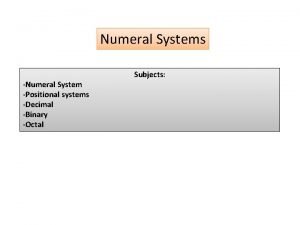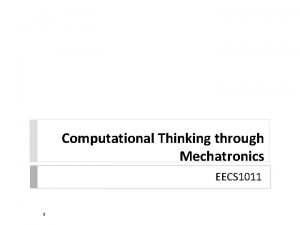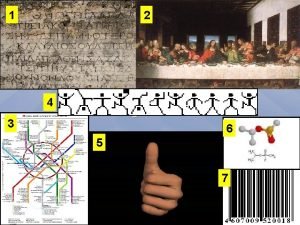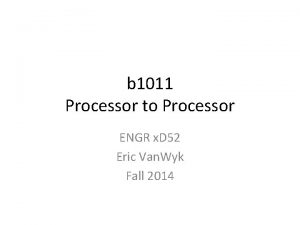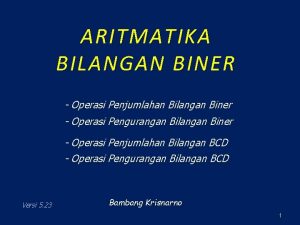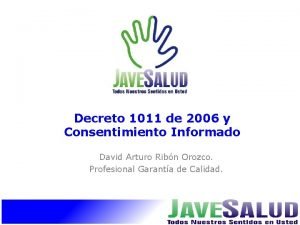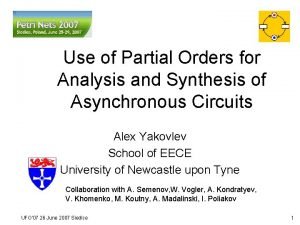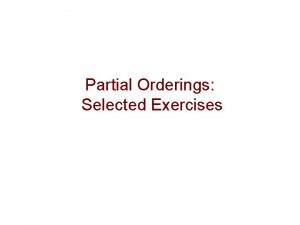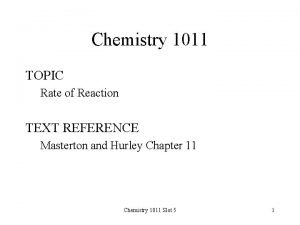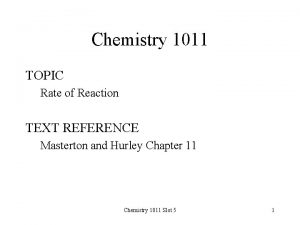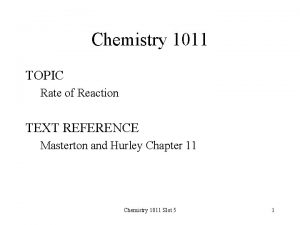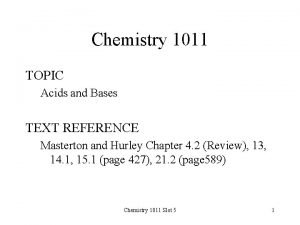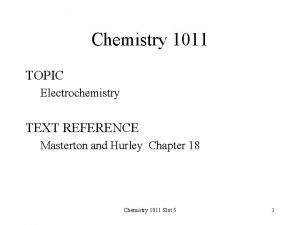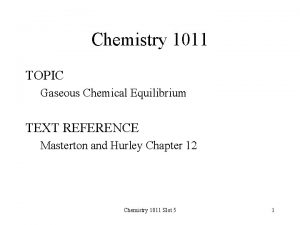Chemistry 1011 TOPIC Rate of Reaction TEXT REFERENCE








![Overall Rate Law and Order • Rate(First Step) = k 1[A][B] • This slow Overall Rate Law and Order • Rate(First Step) = k 1[A][B] • This slow](https://slidetodoc.com/presentation_image_h/2a10653cf57a572034d0580fc9faa1da/image-9.jpg)





![Eliminating Intermediates from the Rate Law Expression [NOCl 2] = k 1[NO][Cl 2] k-1 Eliminating Intermediates from the Rate Law Expression [NOCl 2] = k 1[NO][Cl 2] k-1](https://slidetodoc.com/presentation_image_h/2a10653cf57a572034d0580fc9faa1da/image-15.jpg)

- Slides: 16

Chemistry 1011 TOPIC Rate of Reaction TEXT REFERENCE Masterton and Hurley Chapter 11 Chemistry 1011 Slot 5 1

11. 7 Reaction Mechanisms YOU ARE EXPECTED TO BE ABLE TO: • Define reaction mechanism and show the reaction order is dependent upon the mechanism by which a reaction takes place. • For a reaction taking place in more than one step, identify the rate determining step and identify reaction intermediates. • Determine if a proposed reaction mechanism is consistent with experimental rate data. Chemistry 1011 Slot 5 2

Reaction Mechanism • Description of path or sequence of steps by which a reaction occurs • Simplest case: single collision • Frequently more than one step • Rate expression and order of reaction depend on mechanism • This is why rate law and order must be determined experimentally Chemistry 1011 Slot 5 3

Reaction of CO(g) with NO 2(g) CO(g) + NO 2(g) NO(g) + CO 2(g) • At high temperatures, reaction is single step • Rate = k[CO] x [NO 2] • At low temperatures, reaction is two step process NO 2(g) + NO 2(g) NO 3(g) + NO(g) CO(g) + NO 3(g) CO 2(g) + NO 2(g) CO(g) + NO 2(g) NO(g) + CO 2(g) • Rate = k [NO 2]2 Chemistry 1011 Slot 5 4

Elementary Steps • The individual steps that make up a reaction pathway are called elementary steps • Steps may be unimolecular, bimolecular, etc • The molecularity is the number of molecules that are involved in an elementary process Chemistry 1011 Slot 5 5

Rate Law for Elementary Steps • For a complete reaction, the rate law and the order must be determined experimentally. • This is because the mechanism may be simple or complex, and this determines the rate law and order • For elementary reactions, however, the rate law can be determined from the equation Chemistry 1011 Slot 5 6

Rate Law for Elementary Steps Elementary Step A product A + B product A + A product 2 A + B product Molecularity unimolecular bimolecular termolecular Rate Law Rate = k[A][B] Rate = k[A]2[B] • For the elementary step: NO 2(g) + NO 2(g) NO 3(g) + NO(g) • The rate law is: Rate = k[NO 2]2 Chemistry 1011 Slot 5 7

Slow and Fast Steps • Frequently, one step in a mechanism will be slower than the others • This is the rate determining step • Imagine a two step process: Step 1: A + B X + I SLOW Step 2: A + I Y FAST Total: 2 A + B X + Y • The first step is the rate determining step Chemistry 1011 Slot 5 8
![Overall Rate Law and Order RateFirst Step k 1AB This slow Overall Rate Law and Order • Rate(First Step) = k 1[A][B] • This slow](https://slidetodoc.com/presentation_image_h/2a10653cf57a572034d0580fc9faa1da/image-9.jpg)
Overall Rate Law and Order • Rate(First Step) = k 1[A][B] • This slow first step determines the overall rate • This is the rate law for the overall reaction: 2 A + B X + Y which is therefore second order Chemistry 1011 Slot 5 9

Mechanisms and Rate Laws • The rate law expression is determined by experiment • The mechanism is a hypothesis about the way the reaction occurs • The proposed mechanism must yield a rate law expression that is consistent with experiment Chemistry 1011 Slot 5 10

Mechanism with a Fast Initial Step • Sometimes the first step in a reaction mechanism, which results in the creation of a reaction intermediate, will be FAST • The second step, where the reaction intermediate is a reactant, may be SLOW • When this happens, the rate determining step will be the second step • The rate law expression should then include the concentration of the reaction intermediate Chemistry 1011 Slot 5 11

Reaction Intermediates and Rate Law • The concentration of an intermediate cannot be measured • The concentration of an intermediate cannot be included in a rate law expression if this is to be compared to experiment • The final rate law expression can only include species occurring in the balanced equation Chemistry 1011 Slot 5 12

Reaction Intermediates and Rate Law - an Example Step 1: NO(g) + Cl 2(g) NOCl 2(g) FAST Step 2: NOCl 2(g) + NO(g) 2 NOCl(g) SLOW Overall: 2 NO(g) + Cl 2(g) 2 NOCl(g) • Rate of overall reaction = rate of step 2 • Rate = k 2[NOCl 2][NO] • This is unsatisfactory; [NOCl 2] cannot be measured Chemistry 1011 Slot 5 13

Eliminating Intermediates from the Rate Law Expression • The first (fast) step in the reaction NO(g) + Cl 2(g) NOCl 2(g) FAST is reversible • The reactants and products are in equilibrium rate forward = rate reverse k 1[NO][Cl 2] =k-1[NOCl 2] Chemistry 1011 Slot 5 14
![Eliminating Intermediates from the Rate Law Expression NOCl 2 k 1NOCl 2 k1 Eliminating Intermediates from the Rate Law Expression [NOCl 2] = k 1[NO][Cl 2] k-1](https://slidetodoc.com/presentation_image_h/2a10653cf57a572034d0580fc9faa1da/image-15.jpg)
Eliminating Intermediates from the Rate Law Expression [NOCl 2] = k 1[NO][Cl 2] k-1 Substitute in overall rate law expression Rate of reaction = rate of step 2 Rate = k 2 k 1 [NO]2[Cl 2] k-1 Chemistry 1011 Slot 5 15

Limitations of Mechanism Studies • Mechanisms are suggested in order to explain observed rate laws and orders of reaction • Often more than one mechanism can explain experimental results Chemistry 1011 Slot 5 16


